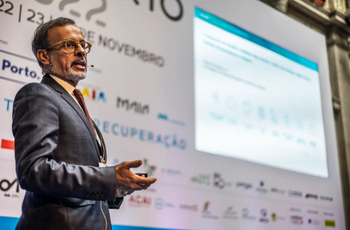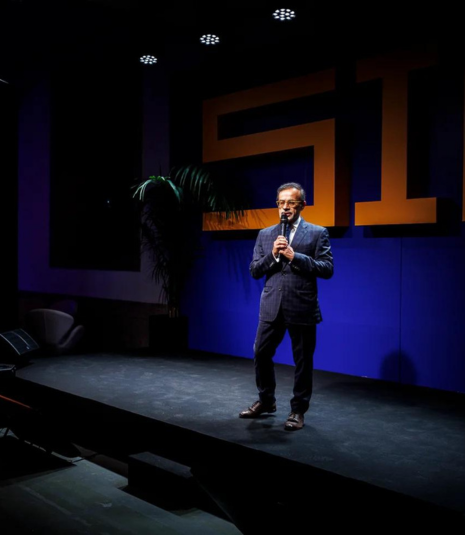Porto, the city of urban rehabilition, makes the region "pulse"

On the last day of the 10th Urban Rehabilitation Week, the Councillor of Economy, Employment and Entrepreneurship took to the Palácio da Bolsa the "Pulsar", the region's economic development strategy, whose definition the Porto City Hall is leading. "More than the result, what counts is the process", emphasises Ricardo Valente.
The councillor recalls that "never in the city has there been a consultation of the desires of entities, not only public, but also private, that have their experiences here in Porto". The aim was, he says, "to measure the pulse of the region" and, from there, "to build a medium and long term plan".
Pulsar, he highlights, addresses "fundamental aspects such as attracting investment and the matter of talent". "What we seek in the challenges of talent, innovation, sustainability, competitiveness and attraction of national and foreign investment is to create an increasingly better city", recalls Ricardo Valente, certain that "we are, in many of them, in a very interesting position".
Namely, in the challenge of innovation and sophistication, where, the councillor reinforces, "Porto has followed an extremely successful path". The figures that prove this are that 22% of the city's gross added value currently comes from the international companies that are setting up in Porto.
After listening to the entities, in a collaborative process where the role of the city council, says Ricardo Valente, was only to "bring people together to discuss the city's economy and launch challenges", Pulsar arrived at ten transversal projects, which will have an investment of 600 million euros.
Among the various ideas for the development of the region, the councillor highlighted the boosting of the blue economy and a "Green Porto", with emphasis on rehabilitation. "Porto is the city of urban rehabilitation", says Ricardo Valente, "it is the city in the country that has shown how it is possible to rehabilitate historic centres and how it is possible to do it well".
The Municipality itself has been working in the area of urbanism and the environment, with incentives for sustainable construction. "Maybe we will be the first city in the country with a reduction of IMI rates related to energy efficiency", a theme already mentioned by the Vice Mayor, Filipe Araújo, in another moment during the Urban Rehabilitation Week.
The Municipality itself has been working in the area of urbanism and the environment, with incentives for sustainable construction. "Maybe we will be the first city in the country with a reduction of IMI rates related to energy efficiency", a theme already mentioned by the Vice Mayor, Filipe Araújo, in another moment during the Urban Rehabilitation Week.
About the assumed proposals, Ricardo Valente recalls that "we don't have a dirigiste logic". "These proposals may not even go ahead if they turn out to be bad ideas. What we want is that the city has a say, that everyone participates in the economic development of the region", reinforces the councillor.
And he concludes: "More than papers, reports, powerpoints, what we are going to do is to build a plan that improves the life of the people, of the companies, of the people who visit us and of the institutions".
Investment in urban rehabilitation in ARU increases 34% in the first semester
Meanwhile, the SIR - Urban Rehabilitation, calculated by Confidencial Imobiliário, released the numbers for the first semester of this year, regarding real estate investment in the nine Urban Rehabilitation Areas (ARU) of Porto: 322.1 million euros, which represents an increase of 34% compared to the same period in 2021.
The increase is also seen in the number of operations, with 33% more, a total of 1,140 transactions completed. According to the newspaper Vida Económica, most of this investment - 53% - was directed to the acquisition of residential dwellings, generating a total of 169.9 million euros, followed by complete buildings (107.2 million euros), retail properties (37.1 million) and the acquisition of service real estate (7.9 million euros).
After Downtown and the Historical Centre, Campanhã is the destination with the highest volume of investment, but it was really the ARU of Corujeira that registered the highest growth: from 3.9 million euros to 10.4 million.




